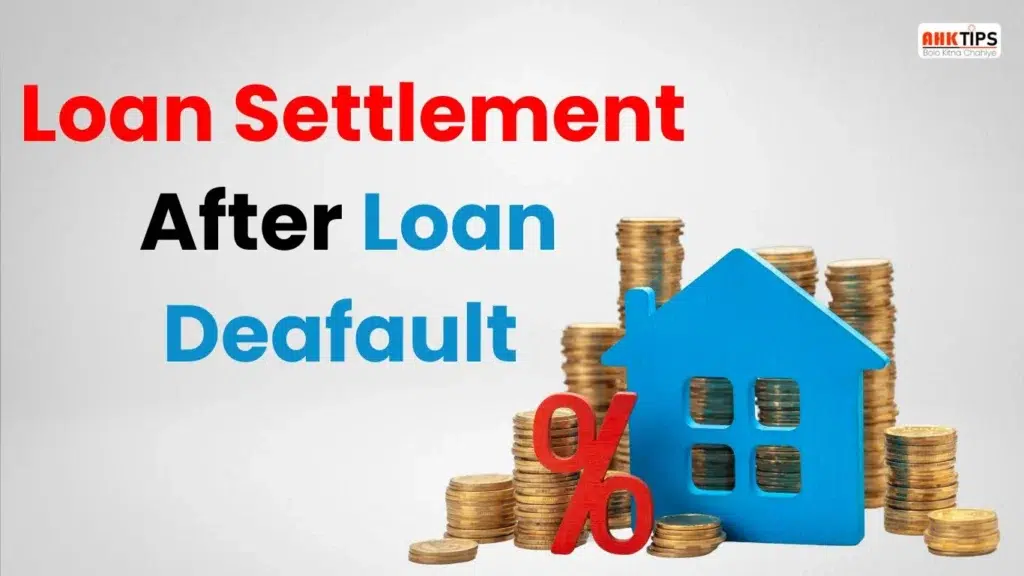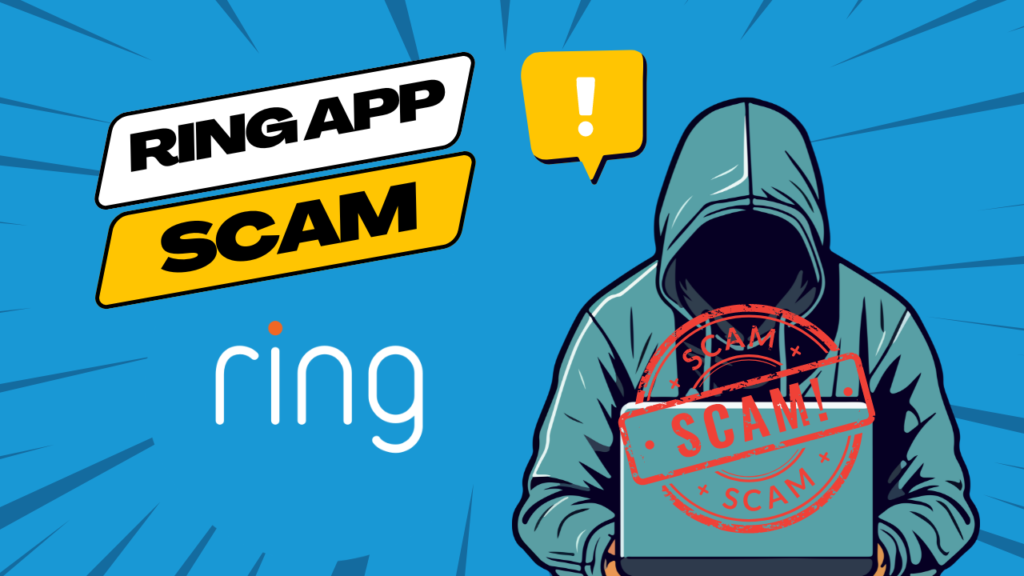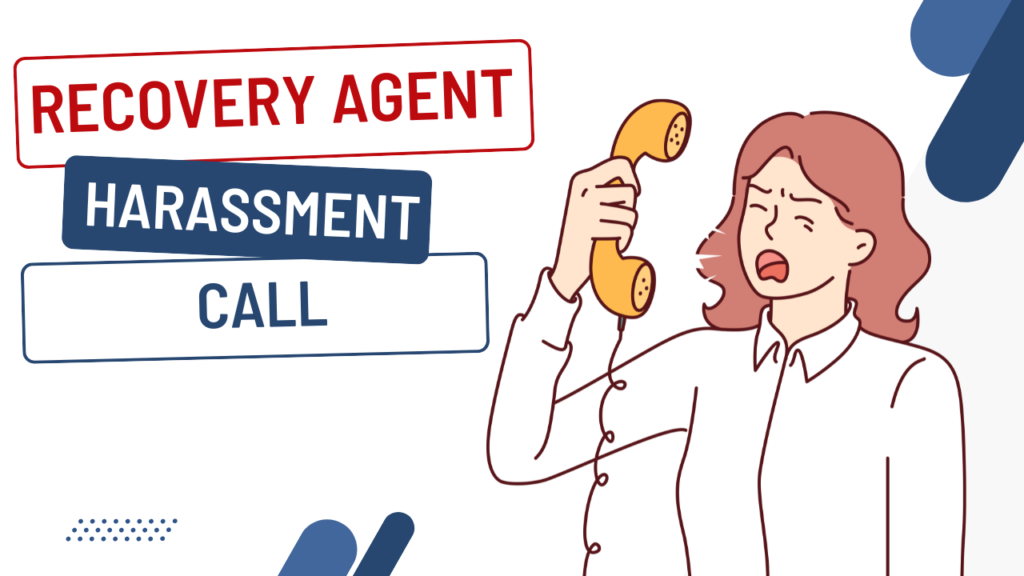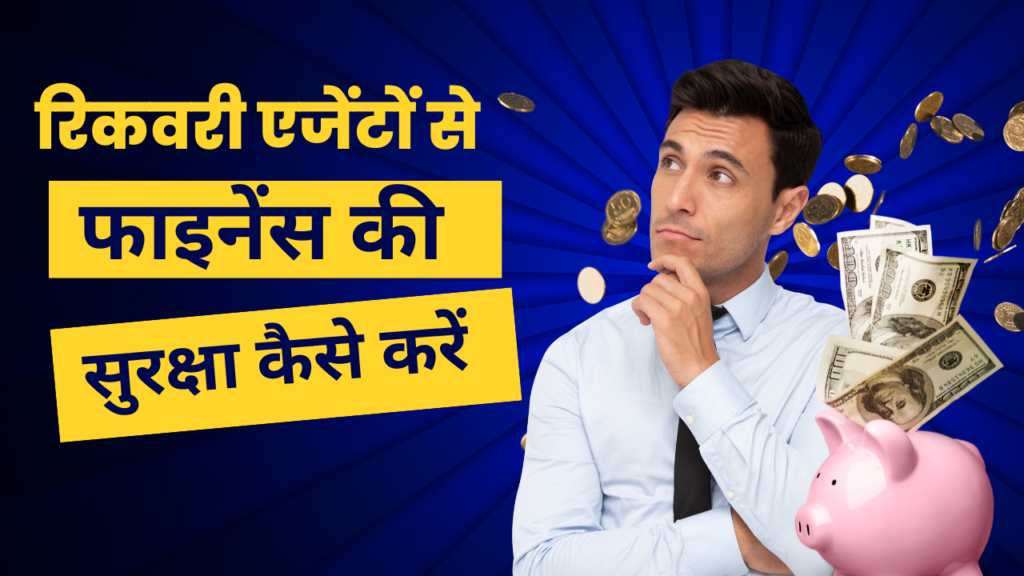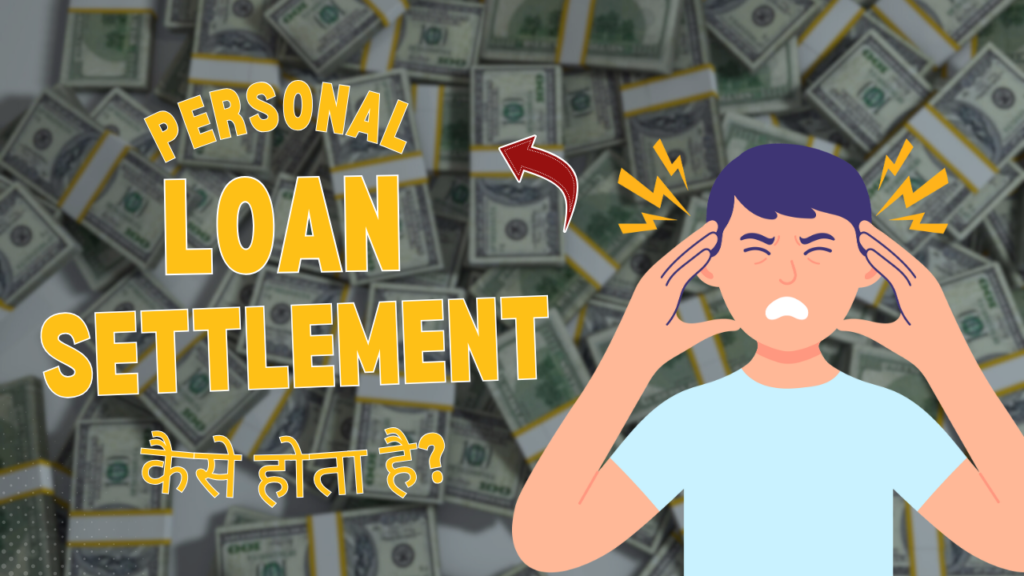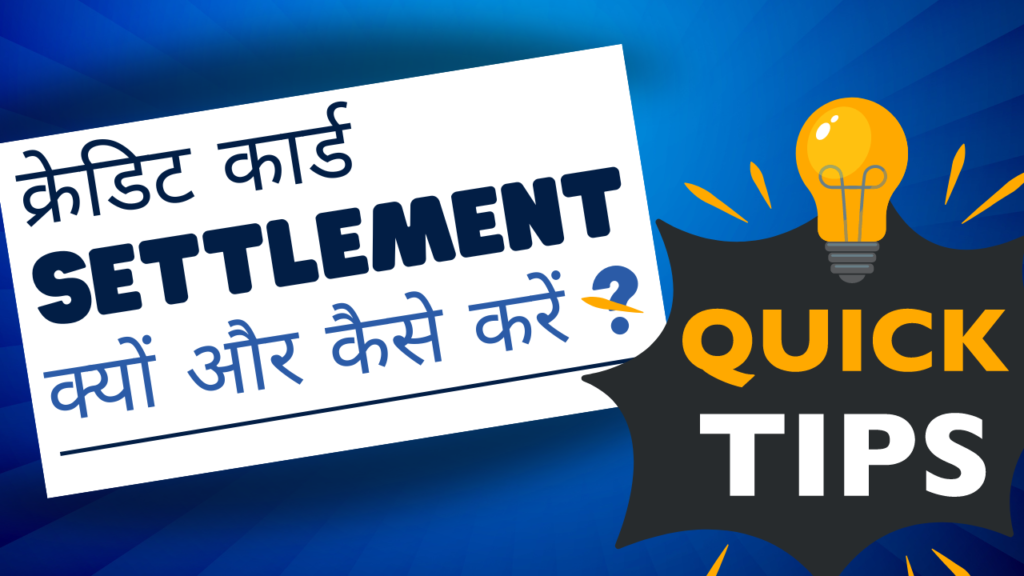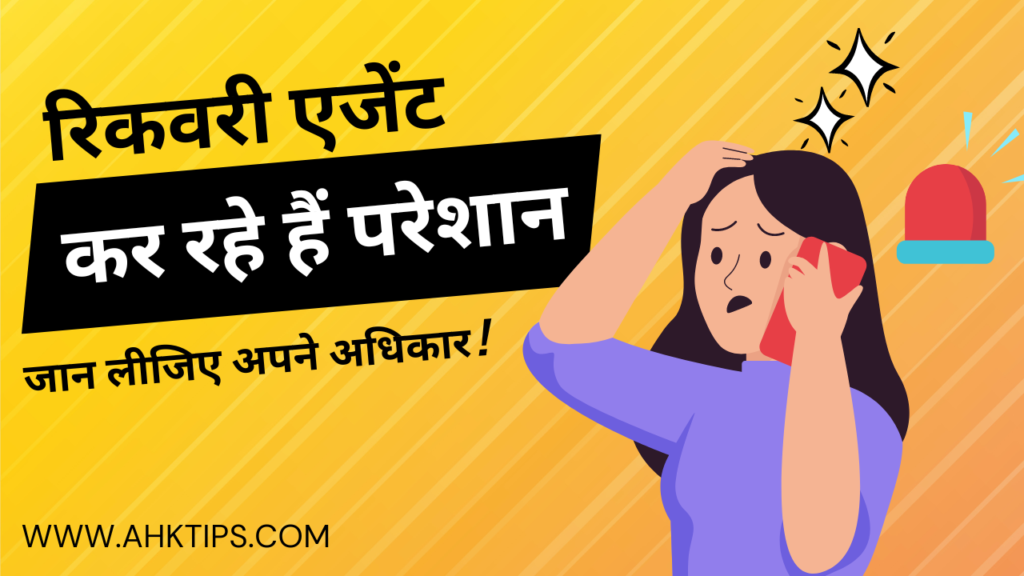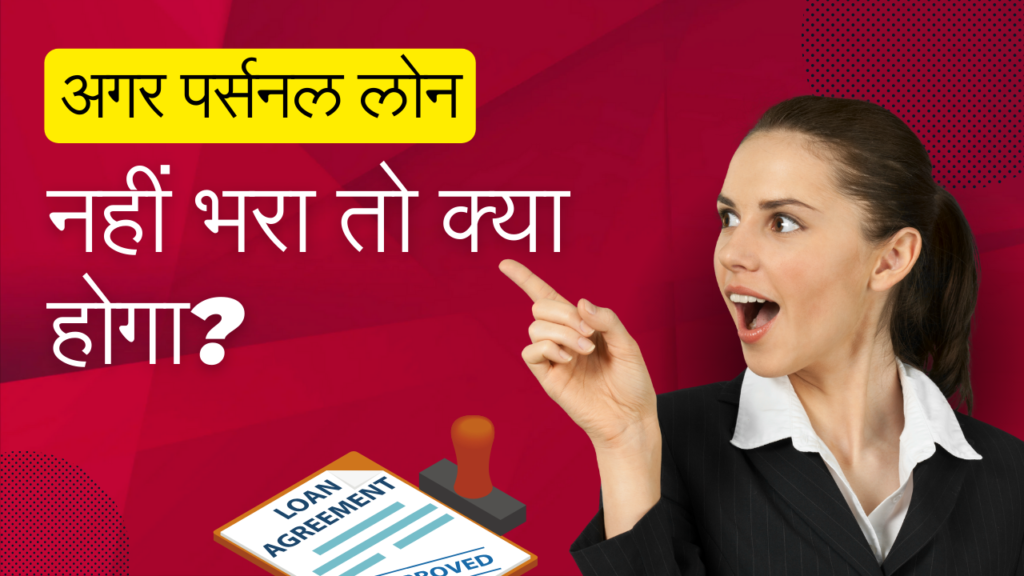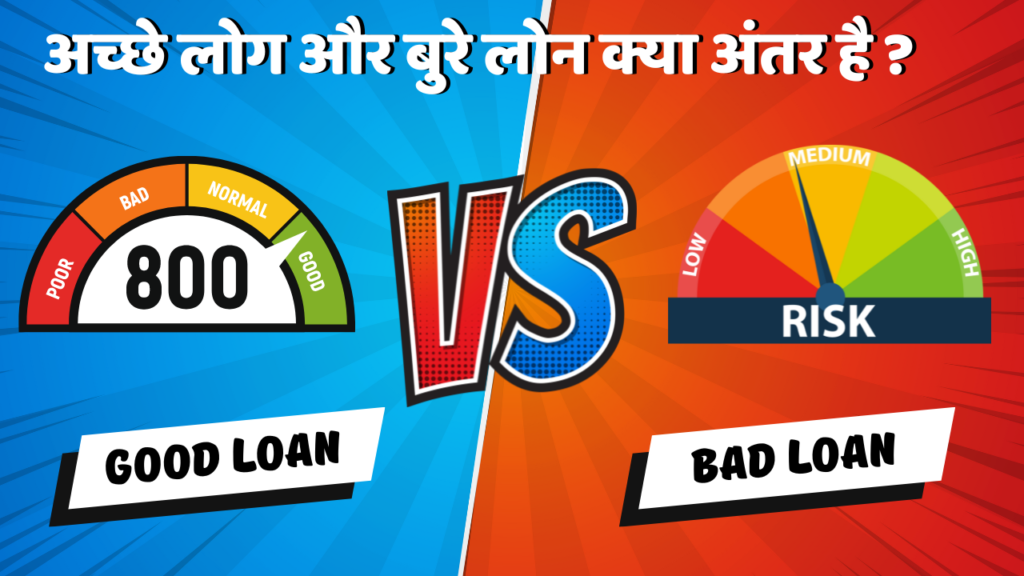Summary
When a person takes a loan from a bank or financial institution and is unable to pay its installments (EMIs) on time, it is called Loan Default. If you do not pay EMI for 90 days or more continuously, the bank declares your loan account as NPA (Non-Performing Asset) and starts the recovery process. This may include notice, a recovery agent, and legal action.
At such a time, if the financial condition of the borrower is weak and he is not in a position to make further payments, then he can opt for Loan Settlement. Loan settlement is a mutual agreement in which the bank waives off some amount of the loan and closes the loan by taking the remaining amount. For example, if you took a loan of ₹5 lakh and have paid ₹2 lakh, then the bank can say that you have given ₹1.5 lakh more, and we will waive off the rest.
The settlement process involves first contacting the bank, submitting a written application, and presenting your financial situation correctly. If the bank feels that the borrower will not be able to make further payments, it gives a settlement offer. After paying the settlement amount, the bank gives a NOC (No Objection Certificate) and a loan closure letter.
Introduction
In today’s time, it has become very common for people to take loans. Whether it is to buy a house, buy a car, or need money for children’s education, people take loans from banks or financial institutions. At the time of taking a loan, a person moves forward thinking that they will repay the EMI on time. But sometimes the situation becomes such that when a person is not able to repay the loan installments (EMIs) on time, then this situation is called a Loan Default.
Loan Default occurs when the person taking the loan does not pay their loan installment on time and does not pay for several months in a row. This situation can make the financial condition of the person even worse, as it causes his CIBIL Score to fall, and there may be trouble in getting a loan or credit card in the future. Also, the bank or financial institution can take legal action against that person, which may include sending a recovery agent, filing a court case, or seizing the property.
In such difficult times, many people think about what to do now. Can any solution be found from the bank? Will this debt remain on your head forever? There is one answer to all these questions – Loan Settlement.
In today’s article, we will understand in detail how settlement takes place after loan default, what are the advantages and disadvantages of loan settlement, what documents are required, and what things should be kept in mind during this process. If you or someone you know is facing this situation, then this information can prove to be very helpful for you.
What is Loan Settlement?
It is a financial process in which the bank or financial institution allows the loan taker to settle the loan by paying a lesser amount instead of paying the entire outstanding loan amount. This facility is for those who are unable to repay their loan on time due to some reason and are continuously defaulting.
Under a settlement, the bank can agree on a lump sum amount, which closes the loan. However, it is important to note that settling the loan can affect your CIBIL score, which may make it difficult for you to get a loan in the future. Therefore, it should be adopted only as a last option.
How does a Loan Settlement work?
When a person is unable to pay the EMI of his loan on time and the outstanding amount accumulates over a long period, the bank or financial institution offers the option of loan settlement. In this, the bank allows the customer to pay a discounted amount instead of the entire outstanding amount, thereby settling the loan matter.
The process of settlement comprises discussions between the bank and the customer, wherein the bank assures that the customer can’t pay the entire loan amount. Thereafter, the bank issues a single-payment offer, which is typically lower than the outstanding loan balance. On the payment of this settled amount by the customer, the bank marks the loan as “Settled”. Yet, this is not good for the CIBIL score since it is not treated as a “Complete Payment”.
Hence, loan settlement should be opted for as a matter of last resort, and if at all possible, loan repayment schemes, loan restructuring, or alternative financial solutions must be opted for so that the credit rating is not impacted.
What is the difference between a Loan Settlement and a Credit Card Loan Settlement?
Let us understand both of these in detail:
- Loan Settlement: In this, the borrower negotiates with his bank so that some part of the total loan amount can be waived off. This means that the borrower has to pay less than his original amount borrowed. This process is adopted when the borrower is unable to repay the entire loan amount and tries to settle with the bank.
- Credit Card Loan Settlement: Credit Card Loan Settlement is a process through which you can reduce your credit card dues by negotiating with the bank or credit card provider. When you are unable to pay the entire outstanding amount of your credit card and your financial situation becomes critical, the bank or credit card company agrees with you. In this, you are given a chance to end your liability by paying a certain percentage of the principal amount.
What documents are required for a Loan Settlement?
The following documents are required:
- Aadhar Card, PAN Card, Passport, or Driving License, etc.
- Salary slips, income tax returns, bank statements, etc.
- Loan Settlement letter, loan details, payment receipts, etc.
- Investment documents, property documents, insurance policies, etc.
How do I apply for a Loan Settlement online?
If you want to apply it online, then follow the easy steps given below:
Visit the bank’s website or app.
- Open the official website or mobile app of your loan provider or bank.
- Sign up if you already have an account, then log in. Otherwise, create a new account.
Check the customer support section.
- Go to the ‘Customer Support’ or ‘Contact Us’ section on the website or app.
- Here, you can find the option related to “Loan Settlement“, such as:
- Filing a loan-related complaint.
- Request form for loan settlement.
Fill out the request form for the settlement.
- Select the “Loan Settlement Request” option.
- Fill in the required details, such as:
- Your name
- Loan account number
- Email ID and mobile number
- Reason (why you want to settle, such as financial problems or reduction in income).
Upload the required documents.
- Upload documents that show your current financial situation, such as:
- Income certificate or salary slip
- Bank statement
- Any other proof that explains your problem?
- Upload all the documents by scanning them in the correct format (PDF or JPEG).
Submit and wait for the bank’s response.
- Once you have submitted the form, the bank will verify your request.
- The bank will most likely contact you within 7-10 working days. They will notify you of the settlement through email, call, or message.
Read the bank’s offer.
- The bank will make an offer to waive some portion of your pending amount. Carefully read it.
- If you accept the offer, go ahead. Otherwise, bargain further.
Make payment
- Pay the decided settlement amount from the bank in online payment mode.
- The bank will provide a payment confirmation and close your loan account.
How does a Loan Settlement affect your credit score?
The impact can be seen in the following ways:
- After a Loan Settlement, if you have a credit card or other credit line, your credit limit may be reduced as creditors feel that you may be a high-risk customer.
- If your credit score drops, it may be difficult for you to get a loan, credit card, or any other type of credit facility. This can also affect your financial stability, especially if you face a financial emergency in the future.
- When you settle for a Loan Settlement with your bank, you are not paying off the entire loan, but paying a certain amount that is less than the principal amount. This is seen negatively by the credit bureaus as it shows that you have been unable to repay your debt. As a result, your credit score may drop.
- After the Loan Settlement process, your credit report will be updated with the information that you have “settled” your loan. This entry remains in your credit history for 7 years and can be viewed negatively by lenders or other creditors, which can affect your chances of getting a loan in the future.
- Since a Loan Settlement means that you have not repaid the entire loan, when you try to get a new loan in the future, banks may look at your credit score and report and reject your application, or give you a loan at higher interest rates.
How long does it take for a Loan Settlement to be processed?
The time taken for the settlement process also depends on various factors, such as the policies of your bank or lender, the outstanding amount, and the communication between the two of you. Usually, this process can take from 1 to 3 months.
The first action in the process of settlement is to approach the bank, where you tell your problem and payment status to the bank. Then, the bank proposes a settlement offer according to your situation. In case you agree with that proposal, you need to pay the amount to the bank within the agreed time. The bank indicates the loan as settled, and this would take some time.
The longer this entire process continues, the more it can impact your CIBIL score, so it is preferable to resolve the issue sooner.
What is the difference between Loan Settlement and Loan Closure?
Although the purpose of both is to end the loan, there are many differences between the two.
Loan Settlement:
Loan Settlement occurs when the borrower cannot pay the entire loan amount and reaches a settlement with the bank or financial institution. In this situation, the bank or institution takes a lesser loan amount from the borrower and waives off the rest of the loan. In this process, the borrower has to pay a lump sum amount, which is less than the entire loan. This usually happens when the borrower is going through a financial crisis or their repayment capacity is not being met.
- What is forgiven? The rest of the loan.
- When does it happen? When the borrower does not have the full amount to repay the loan.
- Advantages: The borrower gets a part of the loan forgiven.
- Disadvantages: The CIBIL score may be negatively affected, and it may be difficult to take a loan in the future.
Loan Closure:
Loan closure occurs when the borrower pays the entire loan amount, which includes both principal and interest. In this case, the loan is fully repaid, and the loan is closed by the bank or financial institution. When the loan is fully paid, the borrower is provided with a No Objection Certificate, which certifies that the entire loan amount has been repaid and the loan has been closed.
- Who is forgiven? There is no waiver, the entire loan amount is paid.
- When does it happen? When the borrower repays the entire amount.
- Advantages: The CIBIL score is positively affected, and there is no problem in taking loans in the future.
- Disadvantages: The entire amount has to be paid, which can sometimes be financially difficult.
Key Differences:
- In a loan settlement, the borrower gets some amount of the loan waived off, while in a loan closure, the entire amount has to be repaid.
- The process of loan settlement usually happens when the borrower does not have the money to repay the entire loan, while loan closure happens when the borrower repays the entire amount.
- Loan settlement can hurt the CIBIL score, while loan closure does not affect the score.
What are the advantages and disadvantages of Loan Settlements?
It has the following advantages and disadvantages:
Advantages
- Through Loan Settlement, the borrower gets a chance to get part of their debt waived off.
- This helps to improve his financial condition and gives him relief from a heavy financial burden.
- Although a Loan Settlement can affect the borrower’s credit score, by following the agreement on time and properly, he can gradually improve his credit score.
- Loan Settlement improves the financial condition of the borrower.
- By doing a Loan Settlement, you can manage your income and costs better and avoid a financial crisis in the future.
- The heavy burden of debt often causes mental stress. With Loan Settlement, the borrower gets relief from this stress, and he can find mental peace in his life.
Disadvantages
- After a Loan Settlement, the borrower’s credit score may be affected.
- Loan Settlements may create difficulties in taking new loans or obtaining credit cards in the future.
- Due to a Loan Settlement, the borrower’s relationship with the bank and other financial institutions may deteriorate.
- In the future, the borrower may have difficulty getting loans from these institutions.
- Through Loan Settlement, the entire loan of the borrower is not waived off. He still has to pay some amount, which can affect his financial condition.
- During a Loan Settlement, the agreement between the bank and the borrower has many conditions. The borrower is required to follow these conditions, which can limit their freedom.
How does settlement happen after a loan default?
Let us know how settlement happens after a loan default – step-by-step:
1: Check your financial situation
First of all, you have to understand yourself why you are not able to repay the loan – have you lost your job? Is there a medical emergency? Or have you suffered a loss in business?
2: Contact the bank
To start the settlement process, you have to contact the bank or financial institution. You can do this work yourself or you can also take the help of a loan settlement advisor.
3: Give a written application
You have to give a written letter (application) to the bank in which you state the reason why you are unable to repay the loan, and you are requesting a settlement.
4: Settlement Offer by the bank
If the bank feels that your financial condition is weak and it is difficult to recover the full amount of the loan, then they can give a settlement offer. In this, they can say that if you pay ₹3 lakh instead of ₹5 lakh, they will close the case.
5: Negotiate
Settlement is a process of negotiation. If you do not agree with the bank’s offer, you can negotiate and reduce it further.
6: Take a written agreement
Whatever settlement is decided by the bank, take it in the form of a written agreement.
7: Make payment and take NOC
After the settlement amount is decided, you have to pay it within the stipulated time. After payment, do not forget to take NOC (No Objection Certificate) and Loan Closure Letter from the bank.
Conclusion
Taking a loan has become a very important part of our needs nowadays. But when for some reason we are unable to pay the loan EMI on time and this situation persists for a long time, it is called Loan Default. In such a situation, the person comes under mental, financial and social pressure.
In such a difficult time, loan settlement can be a way that gives you relief. This is an agreement in which the bank accepts that you cannot repay the entire amount, so it closes the loan account by taking a fixed small amount.
Loan settlement should be a last resort, when you have no other option. Before this, you should also talk to the bank about EMI restructuring, moratorium, or temporary relief. If the bank feels that you will not be able to make further payments, then it considers the settlement process.
Frequently Asked Questions (FAQ’s)
Ans: Yes, a loan settlement can hurt your credit report, which may make it difficult for you to get a loan in the future.
Ans: If you have repaid the entire amount after loan closure, then the CIBIL score is positively affected, as it reflects your credit responsibility.
Ans: After a loan settlement, the part waived by the bank or lending agency can never be repaid. However, if you have money, you can repay the remaining amount, but before that, you have to work, keeping in mind the settlement agreement.
Ans: The loan closure process can usually be completed in a few days to a week, provided you have paid the full amount and received all the documents from the bank.
Ans: Before deciding on a loan settlement, you should consider your financial situation, the terms of the agreement with the bank, and the long-term implications of this process. It is also important to understand the impact on the CIBIL score.

